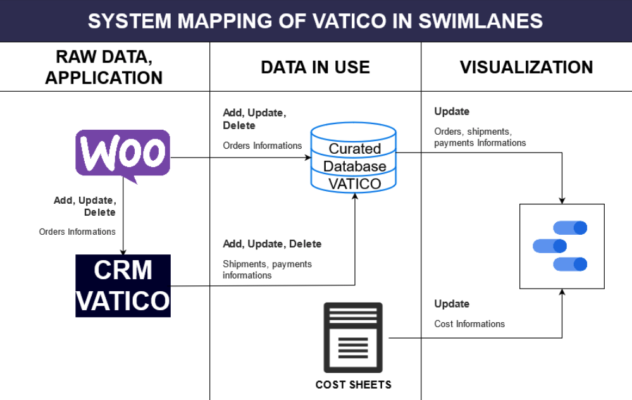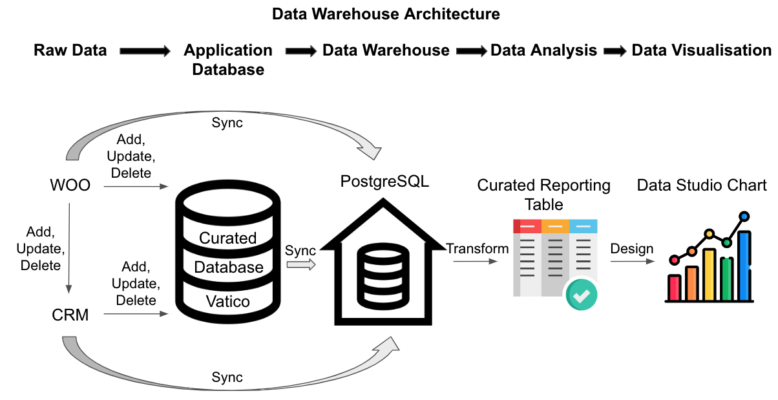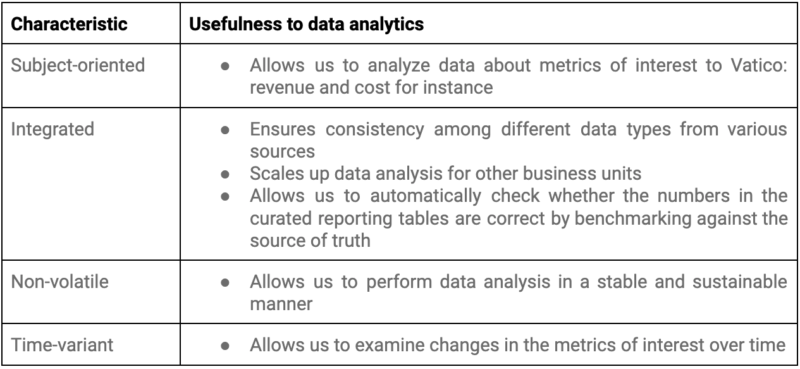Training Data
Why does Vatico use a data warehouse?
Data is an asset to any company, including Vatico. We want to ensure that we set up the right systems and processes needed for the most effective data storytelling. In today’s blog post, we will examine why Vatico transitioned from a non-data warehouse architecture to a data warehouse architecture.
Non-data warehouse architecture
Vatico used to load our datasets from various data sources and analyze them subsequently.

Figure 1: Non-Data Warehouse Architecture
However, after the business expanded, we have more business units, partners, and consequently many data sources. It was not practical to load the datasets from so many data sources because it slows down data analysis and may even result in discrepancies in numbers.

Given Vatico’s emphasis on effectiveness and efficiency in data analysis, we decided to adopt a data warehouse.
What is a data warehouse?
A data warehouse is a central repository of information from multiple sources which can be used to support data analytics and business intelligence in businesses (Amazon Web Services).
Why do we want to use a data warehouse?
Vatico currently operates three business units. Each business unit has a wide range of data sources: MySQL, Google Sheets, Customer Relationship Management (CRM), Application programming Interface (API), and Business Intelligence (BI) etc. Having a data warehouse would help to streamline and consolidate the data for ease of usage. In other words, we can spend less time on data cleaning and data engineering, but instead focus on data analysis, as can be seen from the figure below.

Figure 2: Data Warehouse Architecture
How does a data warehouse enhance data analysis?
There are four characteristics of a data warehouse which facilitates data analysis in Vatico. As computer scientist William Inmon, father of data warehouse (Oracle) aptly described, data warehouses are subject-oriented, integrated, nonvolatile, and time-variant.

These four traits are strong motivations for why Vatico adopted a data warehouse.
What are some factors hindering businesses from adopting a data warehouse?
Given that all the data is stored in a centralized repository, it is important to ensure that cybersecurity is top-notched. Vatico thus decided to use Amazon Web Services Relational Database Service, a credible cloud data warehouse.
Apart from cybersecurity, there is a lot of technical expertise involved in shifting the databases to a data warehouse. It is important to hire a solution architect to facilitate the shift to a data warehouse architecture.
Lastly, having a data warehouse might be costly for some businesses. Nonetheless, Vatico remains committed that having a data warehouse is a worthy investment in the long run.



